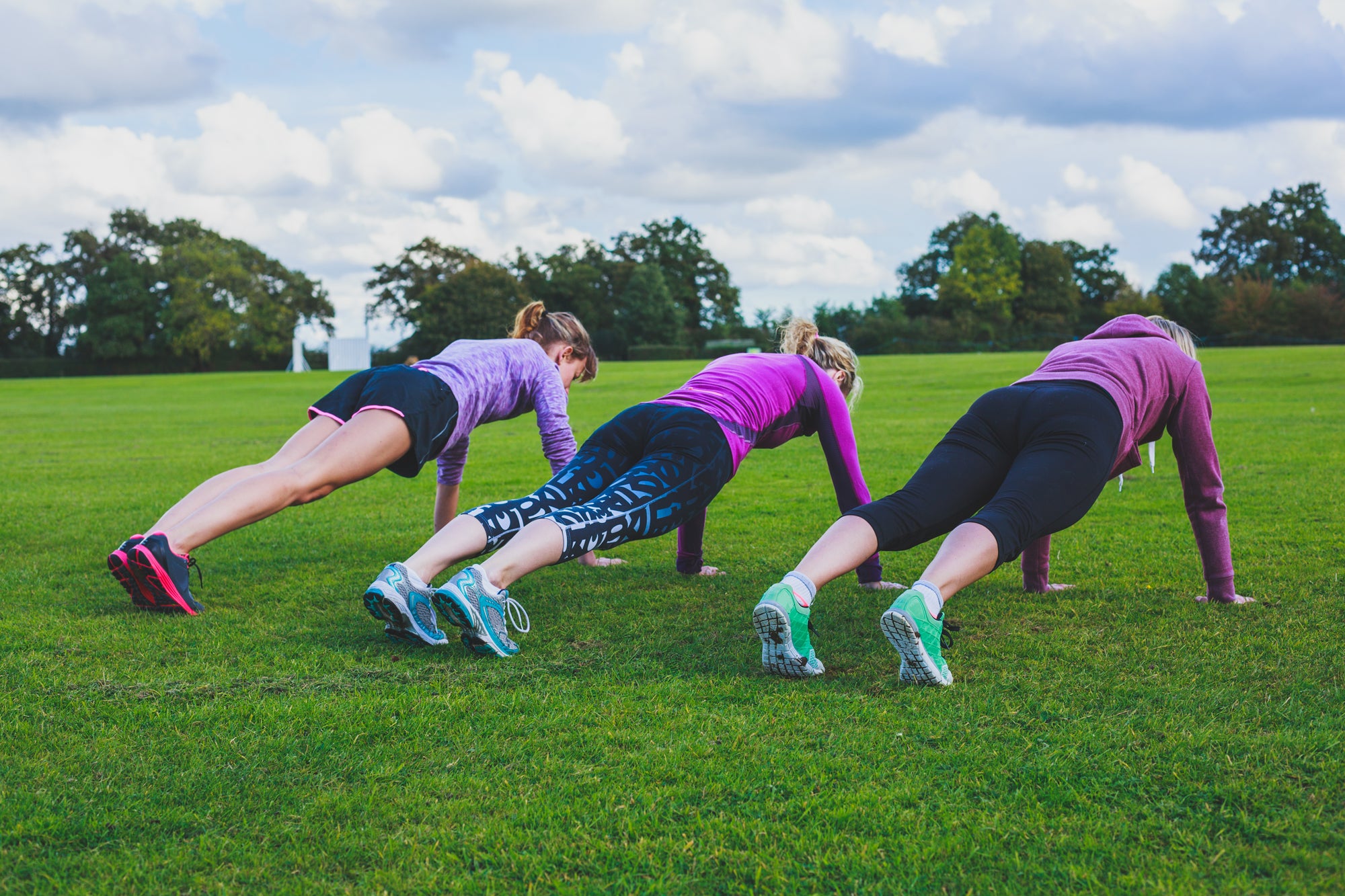The Slacker’s Guide to Off-Season Strength Training

During the off-season triathletes make a lot of big promises to themselves and goals that often seem impossible to keep—in hindsight. Before we know it, it’s February and we “should have done _______ and _____ and ______ in our off-season.” (Sure, there are the triathletes who manage to train perfect and eat perfectly 100% of the time, but the mere mortals know what I am talking about.)
What gives? Are the off-season goals too lofty in light of the holidays, school schedules, and monetary drama that often accompanies that time of year? Do we set our goals too high or tight that we can’t reach them? Is working out on a strict schedule or actually accomplishing that strength training routine going to happen, once and for all? (Dude, I hope so—because that’s what my off-season plans are.)
Well, if we are unable to make and keep the big goals for off-season strength training, perhaps we can keep a few small ones. I recommend starting with an easy strength circuit twice a week, and daily mobility work.
This easy strength circuit consists of a workout that you can do with absolutely no gym, no equipment and very little time. Two times a week? Ten minutes each time? I know we can make that happen.
Strength Workout 1: Work through this circuit as many rounds as you can for 10 minutes.
- 15 slow, below-parallel air squats
- 20 walking lunges (squeeze the glutes)
- 15 push-ups or knee push-ups if necessary
- :30 plank
- Rest :30
- Repeat
Strength Workout 2: 10 minutes, as many rounds as possible in 10 minutes.
- 10 lateral lunges or curtsey squats
- 10 burpees or squat thrusts
- 15 glute bridges with 2-second hold at the top (squeeze the glutes)
- 15 v-ups or flutter kicks
- Rest :30
- Repeat
These two workouts are not “hard,” but you will feel these movements in your body the next day if you are new to strength training. As you get less sore from the activities, you can make it harder by adding more reps, higher speed and intensity, and more exercises to your routine.
Finally, the best thing you can do for your health, stress, and recovery is take time to complete some mobility work in the evenings. After the kids (if you have them) are in bed, after work and laundry is somewhat done—sit on the floor and stretch, roll with a trigger point ball or a foam roller (or your favorite recovery tool of choice). Breathe, stretch, and just be while you are talking with your significant other, watching the news, catching up on social, or reading a book. This simple act of stretching your body and doing something kind to it pays huge dividends in the off-season, and is an easy habit to develop that can carry you well into your on-season. When spring rolls around, you’ll have some real progress with your strength and mobility—and a big goal accomplished with only a few minutes a week.
Meredith Atwood (@SwimBikeMom) is an attorney, speaker, Ironman triathlete, and author of Triathlon for the Every Woman: You Can Be a Triathlete. Yes. You., the newly updated and revised version is being re-released in 2019. She is the host of the podcast, The Same 24 Hours, a show which interviews interesting people who make the best of the 24 hours in each day. You can download a free triathlon race day checklist here. Meredith lives in Atlanta with her husband and two children and writes about all things at MeredithAtwood.com. In addition to Triathlon, Meredith has second book due out Fall 2019.